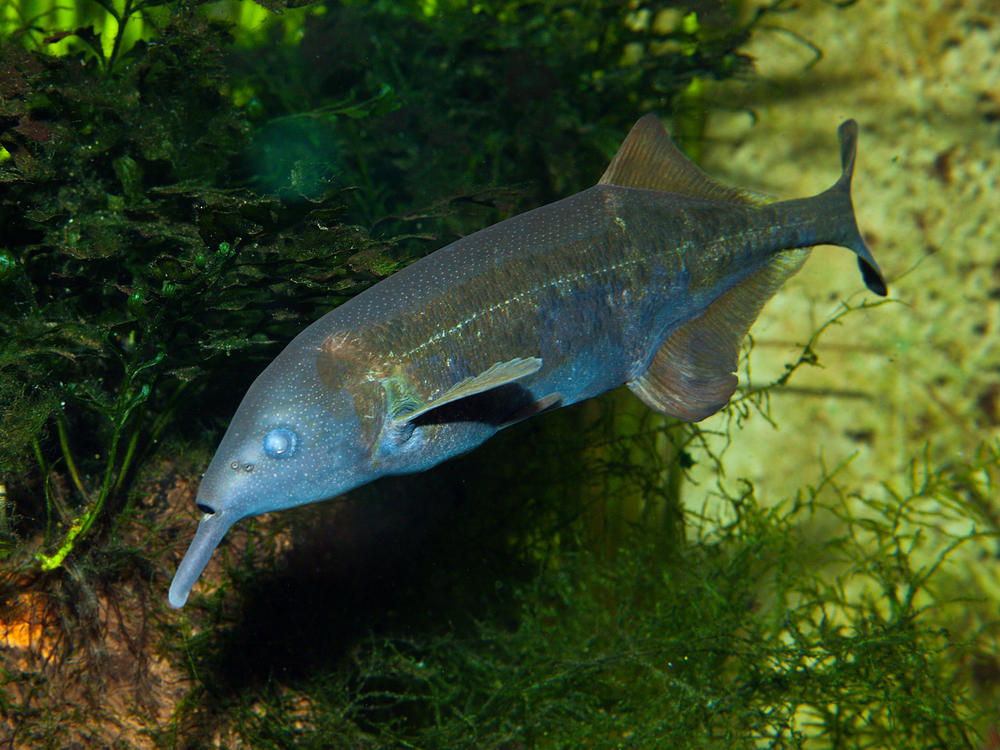Section Branding
Header Content
The "shocking" tactic electric fish use to collectively sense the world
Primary Content
Neuroscientist Nathan Sawtell has spent a lot of time studying a funky looking electric fish characterized by its long nose. The Gnathonemus petersii, or elephantnose fish, can send and decipher weak electric signals, which Sawtell hopes will help neuroscientists better understand how the brain pieces together information about the outside world.
But as Sawtell studied these electric critters, he noticed a pattern he couldn't explain: the fish tend to organize themselves in a particular orientation.
"There would be a group of subordinates in a particular configuration at one end of the tank, and then a dominant fish at the other end. The dominant fish would swim in and break up the group, and they would scatter. A few seconds later, the group would coalesce and it would stay there for hours at a time in this stationary configuration," Sawtell, who runs a lab at Columbia University's Zuckerman Institute says.
Initially Sawtell and his team couldn't put together why the fish were always hanging out in this configuration.
"What could they really be talking to each other about all of this time?"
A new study released this week in Nature by Sawtell and colleagues at Columbia University could have one potential answer: the fish are creating an electrical network that is larger than any field an individual fish can muster alone. In this collective field, the whole school of fish get instantaneous information on changes in the water around them, like approaching predators.
Rather than being confused by the flurry of electric signals from other fish, "these fish were clever enough to exploit the pulses of group members to sense their environment," Sawtell says.
The question remains whether elephantnose fish intentionally spread out to maximize their sensory range, or if they simply make the most of each other's positioning. While orienting themselves in the most efficient pattern would be difficult, Sawtell says this could be possible.
"How cooperative it is, and whether they're really organizing their collective behavior in a high level way, we don't know" he says. "But again, these are very brainy fish."
Want to hear us cover more animal news? Email the show at shortwave@npr.org to let us know!
Listen to Short Wave on Spotify, Apple Podcasts and Google Podcasts.
Listen to every episode of Short Wave sponsor-free and support our work at NPR by signing up for Short Wave+ at plus.npr.org/shortwave.
This episode was produced by Rachel Carlson and Michael Levitt. It was edited by Viet Le and Christopher Intagliata. Brit Hanson checked the facts. Josh Newell was the audio engineer.

